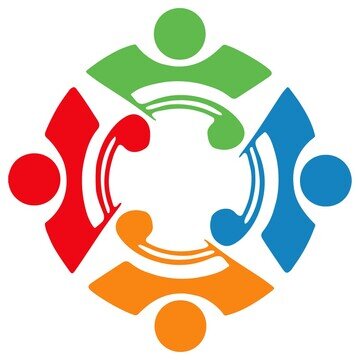2. Smile! It boosts connection
Everyone wants to be happier, right? Two of things we can count on to provide a happiness boost are chocolate 🙋and money … but it turns out there’s something even more potent.
Data point of the week
Researchers in the UK used electromagnetic brain scans and heart-rate monitors to assess the mood-boosting impact of a range of different stimuli. They had participants do, look at, or listen to different things, and measured how happy it made them, and found that:
“One thing trumped all else. It emerged as giving participants the equivalent level of brain stimulation as up to 2,000 chocolate bars. It was just as stimulating as receiving up to $25,000. What was this magic stimulus? A smile.”
Smiling has been shown to:
Make you look more attractive, likeable, and competent to others
Predict (in a photo analysis of the width of subject’s smiles) future happiness, relationship satisfaction, and longevity!
Reflection
It’s no surprise that a broad smile in a photo predicts future happiness. Assuming the smile is genuine, it probably reflects a happy disposition that remains relatively stable over time. We smile because we’re happy—in a 2010 photograph and again in a 2023 photograph.
What’s more surprising is that smiling can initiate happy feelings. We’re happy because we smile. This is known as the facial feedback hypothesis, which suggests that your brain takes cues from your facial muscles, as in, “I’m smiling, therefore I must be happy.” This has been shown to be true in numerous studies … which seems to offer support for the “fake it ‘til you make it” school of thought—if you paste a smile on your face, you’ll feel happier.
But it feels crappy to fake smile. And being told to “Smile!” when it’s the last thing you want to do is even worse. Ugh. (Do boys and men ever get told to “Smile”?). It turns out that only genuine smiles lift mood. If you’ve heard that holding a pencil in your mouth—to force a smile—makes you happy, studies have failed to replicate this finding.
Credit: MilanMarkovic
More important than the smile’s mood-boosting effect, is its power to build connection and trust. Smiling is the universal sign of friendliness. When you smile at someone, they feel seen, put at ease, and liked … and who doesn’t like to be liked?
Even smiling at strangers has a bigger impact than you might think. Just today, a jogger gave me a big smile and “Hi!” when passing me on the bike path … and it gave me a little jolt of “ahh, there are good people in the world” and “it really is a beautiful day.”
Connection Skill & Action Step: Smile!
Pay attention to smiles this week. What do you notice about other people’s smiles and how they make you feel?
When you interact with other people, see if you can amp up your smile a little, while still keeping it genuine. The people you smile at will probably smile back at you (mirror neurons at work), signaling reciprocal friendliness and triggering mutual happy chemicals.
Questions to reflect on or to spark conversation. Please share your responses in the comments.
Have you ever been told to smile? If so, what was the message you got from that?
How do you think you can smile more, while still keeping in genuine?


